
18 minute read
Containment
Seal strategies
Farmers can’t shoot seals, so how do they keep their fish safe?
BY ROBERT OUTRAM
One of the important functions of containment in aquaculture is to protect the fish in pens against predation by other creatures. The principal threat varies depending on where in the world the farm is sited – on Chile’s Pacific coast it is sea lions, in Australia it is sharks and in Scotland and Norway, seals.
The options available to farmers in Scotland looking to protect their stock against seals are now more limited. Seal culling, which was available on a strictly controlled basis, is now virtually outlawed following changes to the Animals and Wildlife (Penalties, Protection and Powers) (Scotland) Act 2020. These removed two grounds – for the purpose of protecting the health and welfare of farmed fish and to prevent serious damage to fisheries and fish farms – under which Scottish ministers can grant licences to kill or take seals. The regulations mean, effectively, that farmers can no longer shoot seals as a last resort.
The regulations on acoustic deterrent devices (ADDs), which are designed to keep seals away from fish pens, have also been tightened up. All these changes on the part of the Scottish government have been brought in to ensure that exports of seafood to the United States can continue after 1 January 2023. This is the date from which the US Marine Mammal Protection Act (MMPA) will apply, meaning that the US will not import fish from jurisdictions where marine mammals are not sufficiently protected.
For farmers, however, the new regime presents a problem. The Scottish Salmon Producers Organisation estimates there are more than
Above: Harbour seal in Scotland Top right: AKVA’s Polarcirkel EcoNet Right: Ace Aquatec’s predator control device
smolts forever increasing, this is generally not a problem. The Garware Sapphire range has been designed from the ground up for aquaculture, with single sided knots to minimise the poten� al of abrasion on the inside of the net and conversely, irritate the snouts of the seals on the outside with a raised knot profi le. “The Sapphire range for aquaculture also benefi ts from a concept that Knox o� en refer to as ‘Locked Geometry Technology,’ where the ne� ng has inherent s� ff ness and is also heat-set to keep the mesh wide open on the square, preven� ng it from relaxing back to the diamond orienta� on as woven. This signifi cantly helps the reten� on of small smolts and cleaner fi sh who may readily exploit a relaxed nylon ne� ng that has pulled back into the diamond shape.” Garware has even invested in a mechanical device, known as the Aqua Terminator, that can be adjusted to replicate diff erent types of predator a� ack, to put its nets through their paces. The robot, which boasts a fearsome set of jaws, can not only bite but also push and pull its target, simula� ng a real predator a� ack very 130,000 seals in Sco� sh waters, and convincingly. convincingly. they are intelligent and determined they are intelligent and determined Oman adds that the roping, tensioning and weigh� ng specOman adds that the roping, tensioning and weigh� ng specpredators. ifi ca� on of an an� -predator net are of prime considera� on ifi ca� on of an an� -predator net are of prime considera� on
For sites where seal preda� on is a For sites where seal preda� on is a for suppliers and customers. for suppliers and customers. problem locally, operators are looking problem locally, operators are looking He explains: “The inherent s� ff ness of the Sapphire He explains: “The inherent s� ff ness of the Sapphire to ensure that their nets are up to the to ensure that their nets are up to the products restrict the eff ec� veness of seal a� acks, as it is products restrict the eff ec� veness of seal a� acks, as it is job of keeping the seals out. not as easy to grab a handful of this material as it is for not as easy to grab a handful of this material as it is for
Finlay Oman, Commercial Director with Finlay Oman, Commercial Director with nylon or Dyneema. To date, Sapphire Seal Pro has been nylon or Dyneema. To date, Sapphire Seal Pro has been net supplier W&J Knox, says his company net supplier W&J Knox, says his company very successful at reducing stress induced mortali� es very successful at reducing stress induced mortali� es has been working on customised net soluhas been working on customised net solu- through seal a� acks and at the same � me almost elimithrough seal a� acks and at the same � me almost elimi� ons, though its partnership with Indian net� ons, though its partnership with Indian net- nated breaches of the ne� ng. Where there is a will there nated breaches of the ne� ng. Where there is a will there maker Garware Technical Fibres. These vary maker Garware Technical Fibres. These vary is a way, and some sites have had challenges from dogfi sh is a way, and some sites have had challenges from dogfi sh from nylon nets through to the patented, from nylon nets through to the patented, nibbling on mortali� es in the base of the net, damaging the nibbling on mortali� es in the base of the net, damaging the kno� ed HDPE (high-density polyethylene) kno� ed HDPE (high-density polyethylene) twines. In these instances, Ultra-Core is now being specifi ed twines. In these instances, Ultra-Core is now being specifi ed Sapphire range. with further developments due to come to the market in with further developments due to come to the market in
Oman says: “Sapphire Seal Pro has been Oman says: “Sapphire Seal Pro has been the coming months.” the coming months.” revolu� onary in that it has provided a single revolu� onary in that it has provided a single Arthur Campbell, Team Lead, Exports with AKVA Group, Arthur Campbell, Team Lead, Exports with AKVA Group, layered solu� on to predator exclusion. The layered solu� on to predator exclusion. The says HDPE nets off er a good deterrent against predators says HDPE nets off er a good deterrent against predators twine size required can limit the mesh size twine size required can limit the mesh size although they can be less manoeuvrable, for example when although they can be less manoeuvrable, for example when available, but with the average size of salmon they are being cleaned. they are being cleaned.
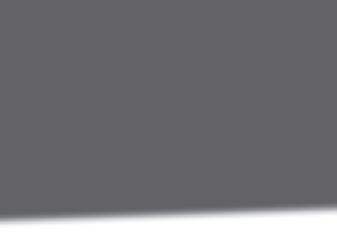
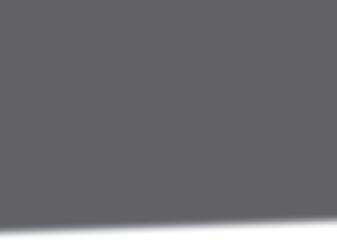
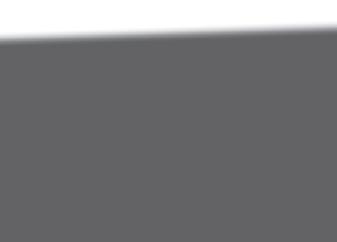


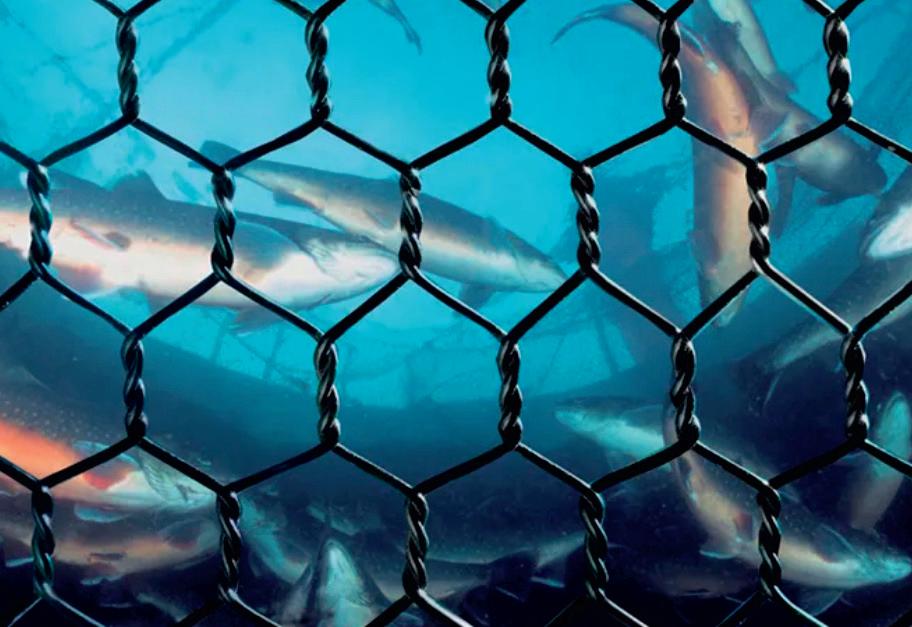
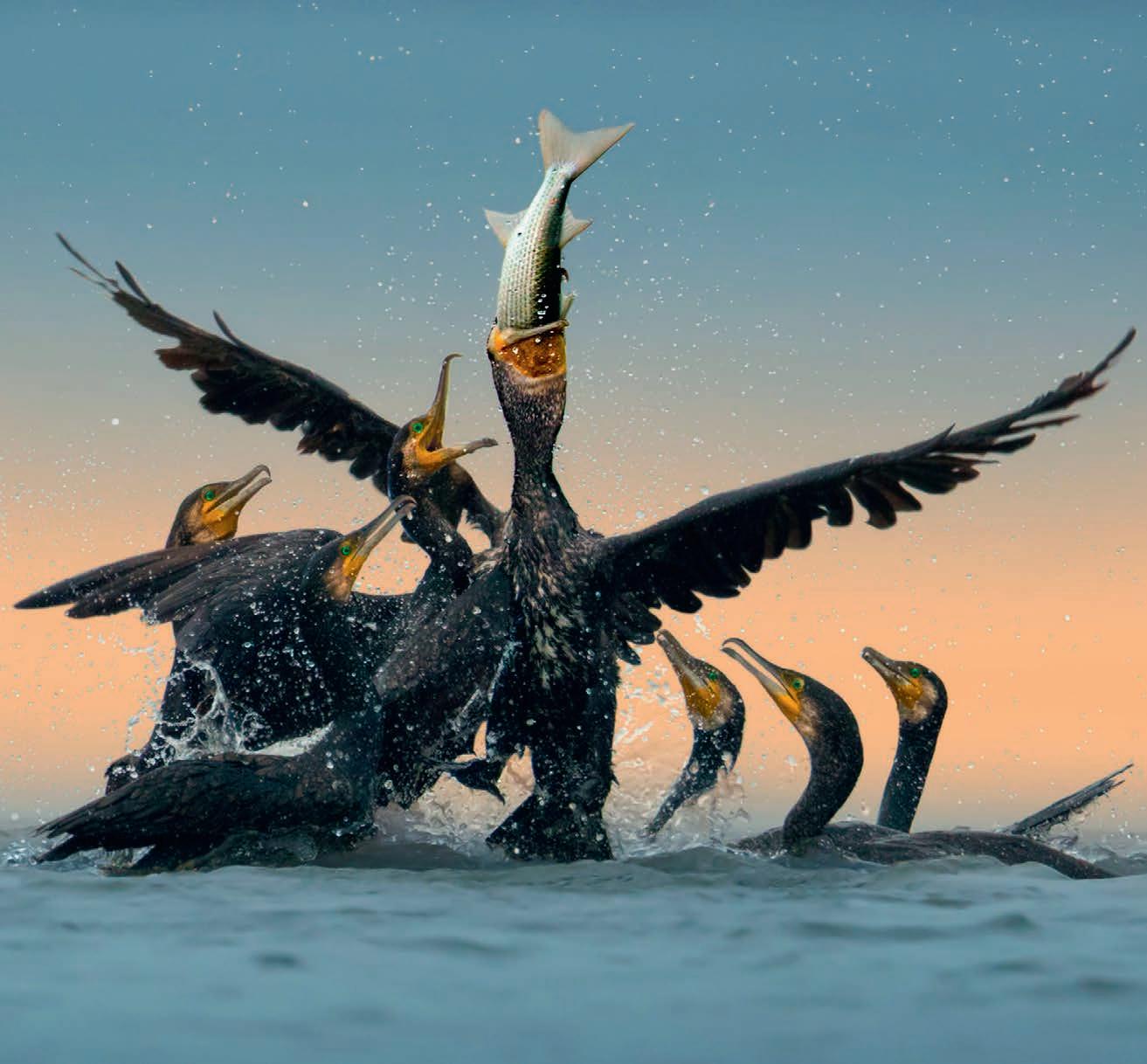

He explains: “HDPE is a bulkier net and can be harder to handle when li� ing, but a lot of the � me the larger farmers will be li� ing nets mechanically.”
As well as net design and materials, he points out, the tension and mooring needs to be eff ec� ve in order for the net to provide proper protec� on: “Even the best net needs the right tension.”
AKVA owns Norwegian netmaker Egersund, which makes a range of superknot, hexagonal ne� ng, and standard knotless ne� ng as well as a variety of kno� ed ne� ng. As part of the AKVA group, Egersund’s products are now being marketed to customers in Scotland too.
The challenges for fi sh farmers at sea also have their parallels on land, as Paul Ma� erface of Collins Nets explains. Ponds and open fi sh farms on lands are vulnerable to o� ers – o� er fences, electrifi ed or otherwise, can be necessary – and also cormorants.
As he points out: “Cormorants are one of the biggest challenges for farmers and they are protected, so licences to shoot them are very limited.”
Placing ne� ng over an en� re pond is not always desirable or prac� cal, so Collins is developing a range of alterna� ve or supplementary measures such as fi sh refuges, so that the fi sh can take cover when predators approach. Meanwhile, although the type of ADDs that can be used to keep seals well away from farm sites has been restricted, there are devices now that meet the demands of the MMPA. Last month the SSPO confi rmed that ADDs that have been shown to comply with both the requirements of Marine Scotland and US regula� ons are now being used by its members.
Tradi� onal ADDs broadcast at constant frequency that seals fi nd unpleasant, but this can also cause distress and even harm to other marine mammals such as whales and dolphins. Also, given � me there is a danger that seals will
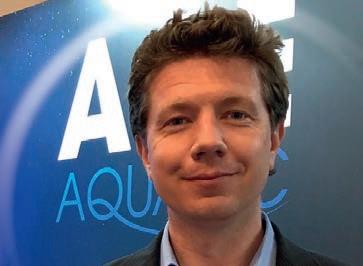

Above: Cormorants feeding on salmon Left: Nathan Pyne-Carter. Top right: Salmon farm in stormy seas
become accustomed to the sound and even use it as a cue that there is a food source nearby – this is described rather appropriately as the “dinner bell” eff ect.
Suppliers such as GenusWave and Ace Aquatec have developed alterna� ve approaches that, for example, use “startle” technology that ac� vates only when seals approach, or frequencies tailored to deter seals without disorien� ng other marine mammals.
Nathan Pyne-Carter, Managing Director with Ace Aquatec, says: “What’s important is the quality of sound that ADDs produce. There are two broad classes – the ‘acous� c barrier’ systems – where you can’t reduce the sound level or switch it off without le� ng seals through – and more up to date systems like ours. The quality of sound is such that the seals can’t get used to it.
“The older type of devices are repe� � ve and can lead to threshold shi� (deafness). Our own systems work on the principle of a s� mulus that elicits a visceral reac� on in the seals, either using electric fi elds or acous� c signal to cause seals to startle, learn associa� ons, and condi� on avoidance behaviours.”
Ace Aquatec’s system has a low “duty cycle” – in other words, while older systems need to be in opera� on as much as 50% or even 100% of the � me, it can be ac� ve only as li� le as 1% to 8% of the � me and s� ll provide eff ec� ve protec� on. the � me and s� ll provide eff ec� ve protec� on.
The company is also working, with the aid of a grant from the Centre for Environment, Fisheries and Aquaculture Science (CEFAS), on exploring ar� fi cial intelligence-led triggers, which could for example dis� nguish between dolphins and seals approaching a farm site.
Seals are smart creatures – but the technology now being deployed to keep them away from their prey is even smarter. FF






Gael Force delivers on Gigha turnkey project
IN early 2020, Gael Force Group was chosen as Principal Project Partner for the turnkey supply and installa� on of equipment and infrastructure for The Sco� sh Salmon Company’s new salmon farm at East Tarbert Bay, Gigha. The site has a 2,500 tonne produc� on capacity and six site staff .
Sco� sh Salmon Company Area Manager, Zane Pretorius, explained: “Our core business purpose, and the exper� se we have in house, is focused on fi sh health and welfare and therefore it is more effi cient for us to have moorings, electrical, mechanical and construc� on experts, such as Gael Force, build the physical farm to the specifi ca� on we require. Compliance, performance, and compa� bility issues can be dealt with at the design stage – meaning we can concentrate on rearing our fi sh.”
Choosing Gael Force to project manage the turnkey installa� on had its benefi ts, as Pretorius explains: “The equipment is designed from the onset to be compa� ble, meaning that the fi nal farm structure works as an� cipated. Professional tradesmen building the site means that the build quality is of a high standard and any compliance, performance, and compa� bility issues are dealt with properly. Overall project progress and budget are easier to manage, as one supplier is in control of all aspects of the build.”
Pretorius adds: “The Covid-19 pandemic took hold in the middle of the build, but we worked closely with Gael Force to put extensive measures in place that meant the project could con� nue safely.”
The equipment supplied and installed at East Tarbert Bay included: SeaQureMoor system, SeaMate 350T feeding barge, SeaFeed technology, Triton 450 plas� c pens, SeaLight underwater LEDs, power distribu� on from barge to pens, consumable goods for opera� ons.
The project, delivered on � me and within budget, created fi nal build quality that delivered to The Sco� sh Salmon Company’s high expecta� ons. The one-supplier approach also meant no subsequent or ongoing compa� bility issues. Pretorius said: “Gael Force have comprehensively trained our team in the opera� on of all the equipment on site, meaning that the farm is operated effi ciently and in line with build specifi ca� ons. Site induc� on and a� er sales technical support have been good, meaning handover and site opera� on went as planned. This in turn means less down � me and allows us to focus on maximising biological performance.”

Left: GaelForce mooring

Raising the stakes
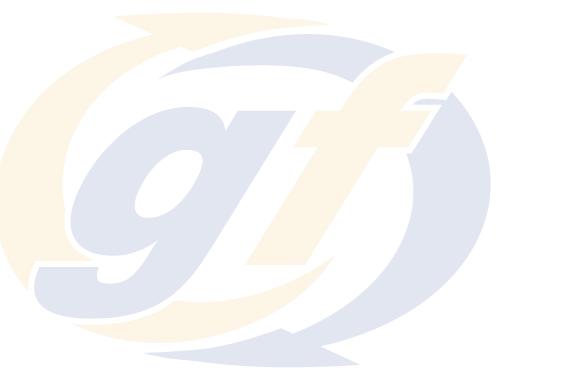
Supply partner Gael Force Group reveals how its sector-leading quality assurance programme and specialised SeaQureWeld process is taking fi sh pen manufacturing to the next level
The forces of nature in exposed farming loca� ons demand a robustly manufactured fi sh pen system that will take everything the harsh marine environment will throw at it. Fish farmers in exposed loca� ons expect heavy-duty pens on their site to be strong and long-las� ng.
To exceed those expecta� ons, Gael Force Group has raised the stakes by inves� ng in a sector-leading quality assurance programme in the produc� on of its HDPE fi sh farm pens while also implemen� ng a series of design improvements.
Well-known brand names in Gael Force’s resilient range of pens include SeaQurePen, Triton, Oceanfl ex, and Aquafl ex. Circumferences range from 40 metres up to 200 metres. Developed over 30 years, these pen systems have been successfully installed in some of the harshest off shore marine environments all over the world.
Over the past three years, customer demand for Gael Force’s pen systems has increased markedly. The Group’s pen manufacturing business, Gael Force Fusion, has more than doubled its highly skilled workforce. Produc� on and refurbishment works have expanded beyond the main base near Oban, with addi� onal manufacturing also taking place at Kishorn alongside longstanding remote build sites in Orkney and Shetland.
But while customer demand has been developing, so too has Gael Force’s desire to deliver world-class levels of quality assurance.
“We have completely raised our game by inves� ng heavily in several areas to reinforce our quality assurance process for the design and build of pens. The prime goal for us is to off er a best-in-class standard of manufacturing excellence and quality assurance that fi sh farmers should expect; the gold standard in the sector,” Group Produc� on Director Stephen Off ord explains.
Underpinning this unique quality assurance programme is an ISO 9001:2015 accredited quality management system and a purpose-built QHSE so� ware pla� orm. The Group’s supply partner has also been recommended for NS9415 cer� fi ca� on by leading Norwegian cer� fi ca� on body, Aquastructures. These are cri� cal founda� ons for formalising strict pen build procedures, monitoring plant and machinery, and suppor� ng the con� nuous skills and training development. Strong, clear team communica� on is also cri� cal and the adopted QHSE so� ware enhances this, through use of automated email alerts.


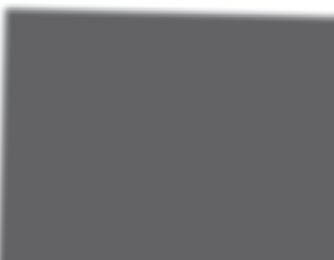
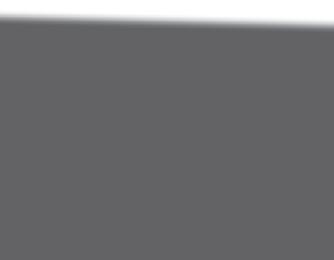
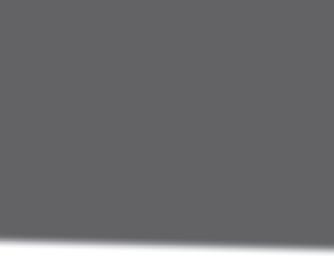

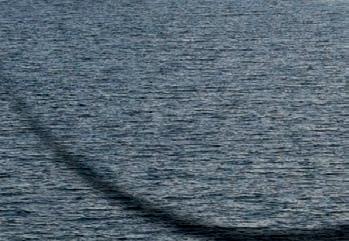
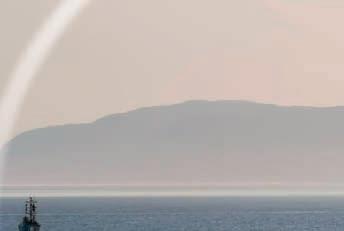

SeaQureWeld
At the heart of the programme is SeaQureWeld – a stringent process for assuring the highest standards of quality in the bu� fusion welding of HDPE pipe joints during pen assembly. Tight Incoming Quality Assurance (IQA) checks are carried out with records retained on all cri� cal components and materials entering the produc� on area to ensure they meet high-quality standards.
Gael Force has invested in highly specialised weld inspec� on equipment, which is used to perform quality tests on every weld bead pro-
duced from butt-fused pipe joints. The process is used over and above the requirements set out in the polyethylene standard WIS 4-32-08 which only requires the removal and hand testing of weld beads. The weld inspection equipment allows further in-depth testing and analysis of the external weld bead created during butt fusion and identifies defects at a higher level within the joint with pinpoint precision and accuracy. It logs all the detail related to each individual weld which is filed per project on the accompanying specialist database on the cloud, ensuring maximum traceability.
In the unlikely event of a defect, the weld inspection equipment, which is controlled with a tablet and smartphone app, immediately detects this, and automatically triggers an email alert which is sent instantly to the supervisor and production manager. The section of pipe containing the defect weld is cut away and removed, and data is recorded in the app and sent for independent weld analysis. The weld is then completely re-done, and the testing process begins again until a pass result is returned on the next bead.
An unsatisfactory weld will not be permitted to leave the manufacturing area and, most crucially, will never make it into the pen assembly stage.
Continuous improvement in design
The fully integrated SeaQurePen 500 and SeaQureLift winch system have been reinforced through design improvements identified from user feedback on the harshest sites.
SeaQurePen is extremely tough and a force to be reckoned with. It is designed to reduce pen furniture and related maintenance, increasing reliability which in turn will lower farming costs. One recent design improvement is creating even more stability for the deck and overall pen structure, with the design of heavy-duty saddle welded stops to prevent movement of the base units on the 500mm floatation rings.
The SeaQureLift winch, designed for many years of reliable service, has undergone design improvements too, with additional protection to the winch motor which is rated to IP69K, the highest level international standard covering protection against environmental factors. Motor terminals are potted with a compound to prevent water ingress and moisture. On-pen installation of electrics has been hugely simplified with the removal of junction boxes on winch installations which means an improvement in reliability and reduction of clutter on the wide walkways. This significant design change also means an electrician is no longer required to carry out an on-pen installation. A frame reinforcement solution has also been designed to improve winch stability on the pen’s deck under the heaviest of loads.
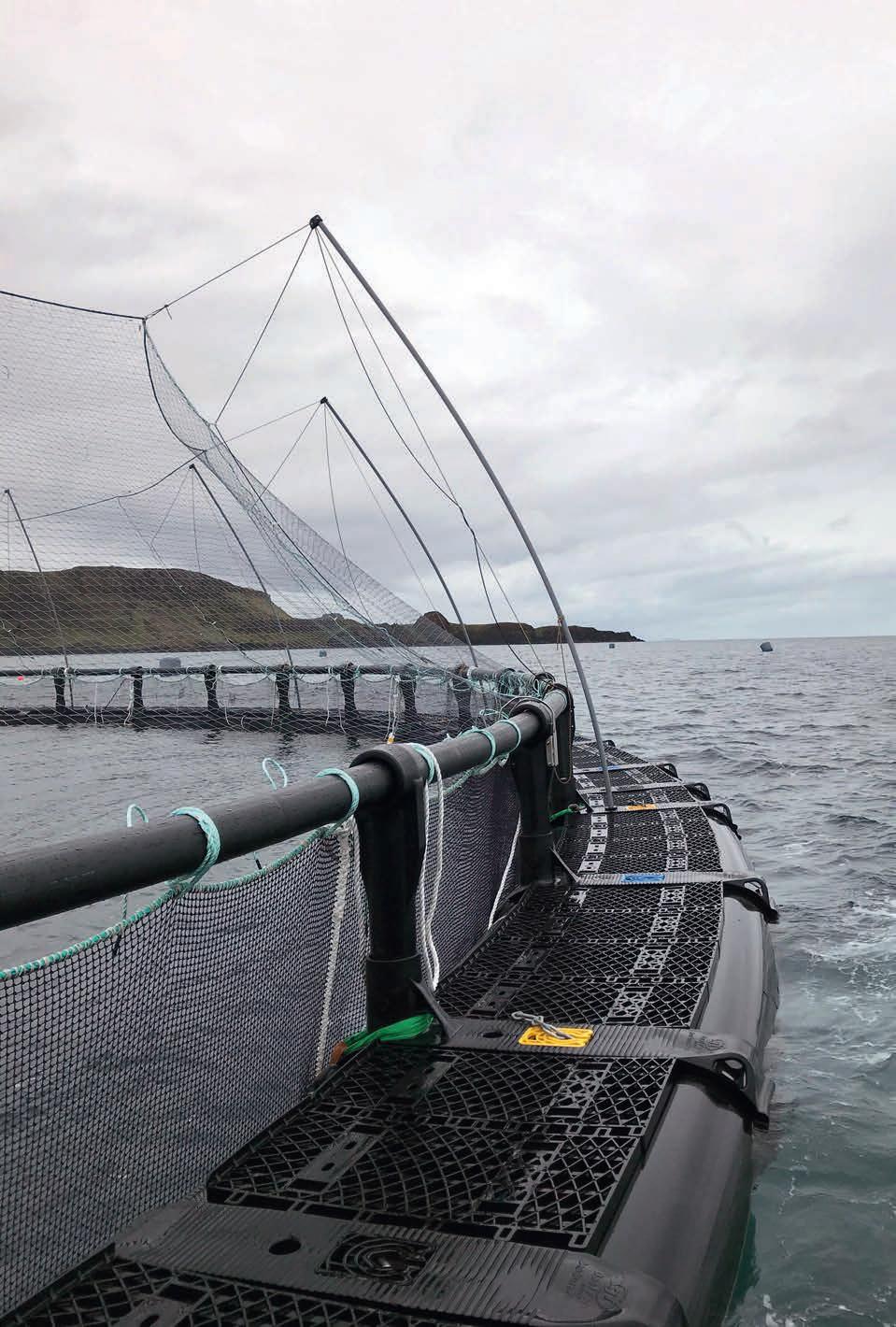
Reputation Built on Trust
With its robust quality assurance programme and latest design improvements, Gael Force is setting a new benchmark for the aquaculture sector.
Stephen Offord says, “SeaQureWeld is on a different level from anything we have seen in the market. It is going to offer customers added confidence in our pen building procedures. Our team, to their credit, have worked extremely hard to embed our robust quality assurance process into their daily routines and we are seeing that pay off for our customers”. FF
Above: Coloured grid covers help clearly define these critical connection points on SeaQurePen to aid staff onsite during operations, and sometimes during poor weather days. Far left: Gael Force was principal project partner for turnkey supply and installation at The Scottish Salmon Company’s site at East Tarbert Bay, which included 12 Triton450 pens. Left: Gael Force Triton 450 pens are towed out to a fish farm near Mull










